Could you improve your cornering? Here's how to tackle bends quickly and safely on a road bike
Cornering safely at speed is an essential skill for all cyclists. We talk you through the best techniques to maintain speed, and stay upright
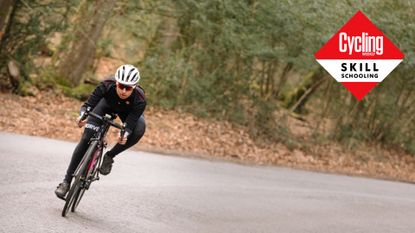
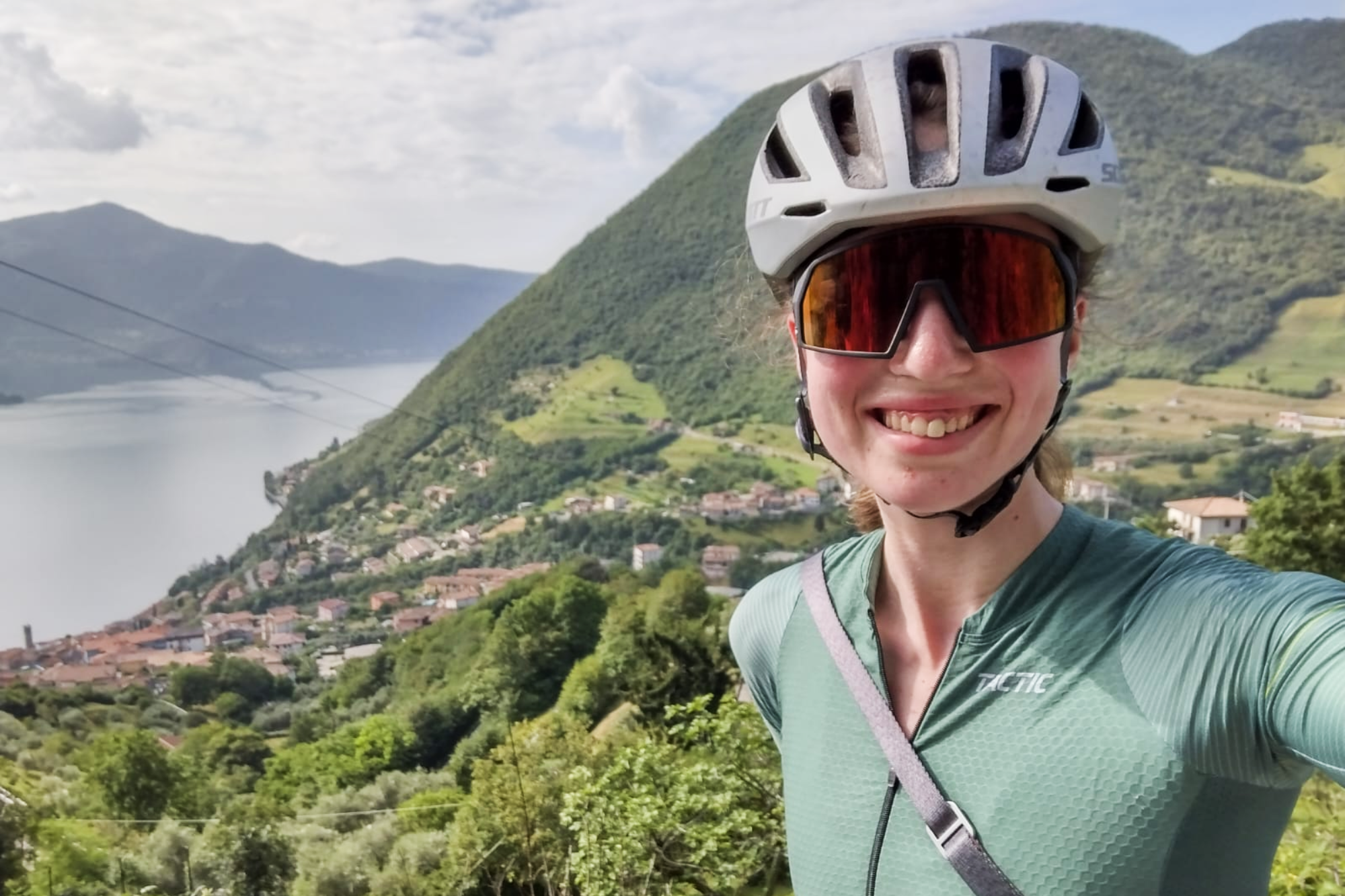
Whether you're tackling repeated switchbacks on long and sweeping European descents, or more rugged and occasionally gravel strewn bends in the UK, you need to know how to corner a road bike.
Corners keep cycling interesting, but to ride them well you'll need to know how to maintain your speed and keep your tyres on the tarmac.
Lightweight bikes and narrow tyres - even with ever wider tyres being the current trend - do not allow for motorcycle-style knee to the ground cornering. Add to that the often poor state of the roads you're riding on, and you soon realise cyclists are up against it a bit. It is vital to get your cornering technique nailed.
Apexing when cornering your road bike - wide in, wide out
We’ll not harp on about this for long, as we are talking real world scenarios in this feature, where it’s not always practical to corner in this manner. But it is worth touching on apexing nonetheless, as it’s universally recognised as the most effective way to take a bend at speed. Plus the principles can be taken into account and applied to a certain extent on the road, even if they can’t be fully taken advantage of.
“The key to keeping your speed through the corner is by keeping a straight line,” says head performance coach Togo Keynes of Njinga Cycling. Put simply, apexing a bend is about flattening out the curve as much as possible, by taking a broad line in and out of the turn.
“If you’re coming into a tight left corner, you don’t want to be coming in hugging the grass on the left hand side,” Keynes points out. “A good 20 to 30 metres before you even get to the corner you’re going to want to be positioning yourself towards the white line in the middle of the road (on the correct left side) before coming towards the apex of the corner and then gliding out wide on the exit.”
The flatter the curve the faster you will safely be able to go around it, or to look at it another way, you will be able to go through at the same speed but much more safely, as you won’t be struggling for grip or reaching for the brakes in a panic. Remember it’s still possible to apex a corner and stay on the correct side of the road.
Get The Leadout Newsletter
The latest race content, interviews, features, reviews and expert buying guides, direct to your inbox!
Keynes says that he finds a lot of experienced cyclists still position themselves in the middle of the left hand lane, but says that you need to be closer to the white line before you come in and towards the apex.
“Visualise the corner, hug the apex and push out wide,” Keynes advises.
Once you’re by the apex of the corner, Keynes says that you need to start looking 20 metres out of the corner, and move back towards the white line in the middle of the road again (while still staying on the correct left hand side).
Use your bodyweight when cornering your road bike
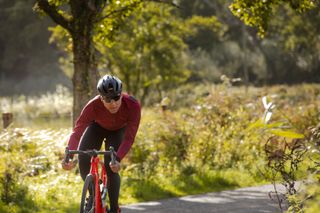
Although you'll be holding a set of handlebars firmly in your grasp, they aren't actually what's doing the steering – it’s leaning. Without getting too scientific, it’s a question of moving your centre of gravity so that the bike stays balanced around the turn.
The faster you’re cornering, the further you will have to lean in order to get your centre of gravity lower, to maintain balance and grip. Clearly there are boundaries, as excessive leaning does not help once the tyres can no longer supply enough traction to keep you upright and sometimes it’s a fine line between success and failure.
It’s a question of common sense, but more so familiarity with the bike and how it handles in a given scenario — for example when riding wet roads in the rain versus dry roads (which we will get into more later). Regardless of all the theory in the world, the best bet is to practise and find both your own, and your bike’s, comfort zones.
Inside leg up, outside leg down when cornering your road bike
As well as using your bodyweight in the corner to lean in, the positioning of your feet on the cranks is also very important.
It’s good practice to stop pedalling as you lean the bike over in a turn (unless you’re on a fixie), keeping the inside pedal up to prevent it striking the ground – at best unsettling you and the bike, and at worst forcing you to have an impromptu sit down in the road (a crash).
So if you’re coming into a left hand bend you should have your left foot up at 12 o'clock and right foot down at 6 o'clock.
“Once your pedals are in this position you’ve got to put pressure on the outside pedal, that’s going to help you stay balanced,” Keynes points out, while at the same timing warning: “If you’ve got your left pedal down you could clip it and that’s going to cause an accident very easily.
“If you do get a little clip, you’ll straighten up and then end up riding away from the corner, and then you have to come back in again, so it’s almost as though you’re doing two different turns”, he explains,” and that causes even more issues.”
Checking your speed when cornering your road bike
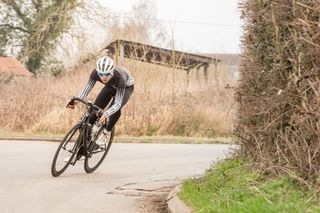
The general thinking here is it’s best to adjust your speed before the corner – getting your braking done while you are still upright and travelling in a straight line. That means you must be looking far enough ahead, but also relies on an ‘ideal-world scenario’, and a number of other assumptions.
“If you can’t see around the corner then always my advice is to slow right down before,” Keynes advises. “You don’t know what’s around the corner, there could be gravel that’s spread across the road, this could be from trucks moving stuff or it could be from rainfall - if you go in with too much speed and you do have to brake you’re going to be in trouble because you could be braking on a loose surface”.
If you have maps on your cycling computer, glancing down at this screen can also be useful for gauging how tight the bend really is.
The truth of it is though that often you cannot see enough of the bend, or are unable to predict every eventuality, often resulting in the need for some pace adjustment in the turn. But there are ways you can make it safer.
First, we appreciate it’s the hardest thing in the world to fight the body’s natural instincts, but if you feel it all getting a bit nervy in a corner your first reaction is likely to be to go rigid. Tensing up will just make things worse. So, hard as it is, try to stay relaxed, particularly your upper body. If you’re trying to scrub some speed then a big no-no is to apply a huge fistful of brake.
If you grab at the front brake you risk the front end washing out (sliding out from under you). Locking the back wheel will send the bike into a speedway style, broadside skid, which is tricky to recover if you’re travelling at speed. So, the moral of the story here is: easy does it.
Only apply brakes smoothly and sparingly. Remember you’re not trying to come to a stop, just scrub enough speed to bring the bike back onto the line you want and you’ll be amazed how little braking force is required.
Look out when cornering your road bike
To be able to position yourself ready for the corner, and potentially slow down a touch beforehand, you need to be aware that the corner is coming up.
Your eyes are your biggest allies when cornering. First, because you need to quickly scan the road and evaluate what lies ahead in the turn, sometimes making split-second decisions about speed and line choice. Second, your body, and subsequently bike, will naturally pull towards the point your eyes are focused on.
When we say scanning, this doesn’t mean turning your head everywhere. But you should be using your peripheral vision and making slight head shifts to stay aware.
When it comes to riding towards what you're looking at, if you’ve ridden off-road you may well have found this out the hard way. It usually goes a little something like this: “that’s a slippery looking tree root, I mustn’t ride… splat – too late!”
But that doesn’t mean you should stop keeping your eyes peeled. Once you’ve registered the presence of potential pitfalls, then look ahead at the line you need to take, don’t remain focused on the obstacle or danger.
Change gears before cornering your road bike
Now that you’ve glided through and exited the corner wide, you're going to want to accelerate back up to speed. But to do this efficiently and effectively you’re going to have to make these adjustments before you enter the corner.
“Before you come into the corner you need to change up or down your gears, and this depends on the gradient of the road,” Keynes notes. If you’re cornering on a descent change up one or two gears, and if the road rises on the exit shift one or two down the sprocket.
Cornering your road bike in wet conditions
All of the above apply when you’re cycling in the rain and cornering on wet tarmac, but you’ll just want to be a little bit gentler with your speed and your braking, and approach bends less aggressively, so not as much leaning into the corner.
Looking at the surface of the road is also even more important in these conditions. “You want to try to avoid puddles because you don’t know what’s underneath and you don’t know how deep it is,” Keynes advises.
Road bike tyre choice and tyre pressures are considerations that you should be making before setting off.
Road bike tyres will combine speed, puncture protection and grip, and you should be running rubber that uses a stickier compound and in wet conditions - you’ll tend to find more options with this focus in the best winter tyres for road cycling.
“A lower PSI will give you slightly more grip as you are cornering because it increases the surface area,” Keynes also notes. If you do run your tyres quite hard, consider reducing this by around five to 10 PSI.
Dos and don'ts cornering your road bike
DO look well ahead as this will give you maximum time to make a proper assessment of an upcoming bend.
DON’T grab a big handful of brake while cornering – you’re quite likely to end up sat on the tarmac.
DO keep focused on the exit of the corner, i.e. the point you are riding towards, even if you’ve strayed off your original line.
DON’T hang off the bike like an ape. Pedal cycles are not Moto GP bikes, and it’s best to keep your body weight closer to the bike, maintaining control with maximum grip.
DO stay relaxed, as hard as it sounds. If you can, most of those little ‘moments’ might come to nothing more than a flash of fast heartbeat and a rush of adrenalin.
DON’T take unnecessary risks. There’s often much more to lose than there is to gain from going into a corner way too hot and overcooking it. Slow in and faster out is the safest approach.

Thank you for reading 20 articles this month* Join now for unlimited access
Enjoy your first month for just £1 / $1 / €1
*Read 5 free articles per month without a subscription

Join now for unlimited access
Try first month for just £1 / $1 / €1

I’ve been hooked on bikes ever since the age of 12 and my first lap of the Hillingdon Cycle Circuit in the bright yellow kit of the Hillingdon Slipstreamers. For a time, my cycling life centred around racing road and track.
But that’s since broadened to include multiday two-wheeled, one-sleeping-bag adventures over whatever terrain I happen to meet - with a two-week bikepacking trip from Budapest into the mountains of Slovakia being just the latest.
I still enjoy lining up on a start line, though, racing the British Gravel Championships and finding myself on the podium at the enduro-style gravel event, Gritfest in 2022.
Height: 177cm
Weight: 60–63kg
-
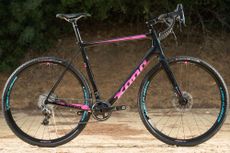 Kona founders buy back the brand; Kona Bikes returns to rider-owned and operated roots
Kona founders buy back the brand; Kona Bikes returns to rider-owned and operated rootsNew owners commit to 'double down on unique brand legacy' and to 'never do a BOGO sale again'
By Anne-Marije Rook Published
-
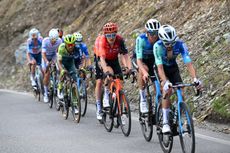 The race within a race and Pogačar domination - 5 things we learned from the second week of the Giro d’Italia
The race within a race and Pogačar domination - 5 things we learned from the second week of the Giro d’ItaliaOur takeaways from the second week of racing as Tadej Pogačar masterclass continues
By Tom Thewlis Published
-
 21 ways to get your season off to a flying start
21 ways to get your season off to a flying startMotivation is key: achievable, aspirational goals with clear checkpoints is a great place to start. Structured training, bike servicing and joining a club will all help set you on the right trajectory, too
By Charlie Allenby Published
-
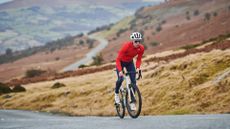 Eight-step guide to crafting your achievable goal this year, according to a cycling coach
Eight-step guide to crafting your achievable goal this year, according to a cycling coachHow to come up with a target you can hit - plus some pointers on how to stay on track
By Chris Marshall-Bell Published
-
 Why is everyone talking about Zone 2 training? Tadej Pogačar, or rather his coach, is responsible - here’s why
Why is everyone talking about Zone 2 training? Tadej Pogačar, or rather his coach, is responsible - here’s whyThe cacophony of praise for Zone 2 training of late left Chris Sidwells scratching his head. So he decided to find out what all the fuss was about
By Chris Sidwells Published
-
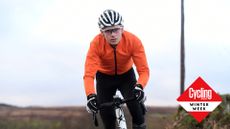 Seven benefits of riding outdoors - which you’ll miss out on if you train inside all winter
Seven benefits of riding outdoors - which you’ll miss out on if you train inside all winterAs with most things in life, there is a balance to be struck…
By Andy Turner Published
-
 Winter fueling: how to match your cycling nutrition to the demands of cold weather riding
Winter fueling: how to match your cycling nutrition to the demands of cold weather ridingGetting the most out of your winter training means making sure you are optimally fuelled for every ride - here's what you need to know about the specific demands of cold season nutrition
By Joe Laverick Published
-
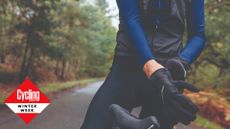 Suffering from numb feet or hands when cycling? Here's how to combat the cold
Suffering from numb feet or hands when cycling? Here's how to combat the coldYour extremities are the first to suffer when the temperture drops. Here's how to avoid painfully cold hands and feet
By Hannah Bussey Published
-
 Ten steps to the perfect amateur 'off-season'
Ten steps to the perfect amateur 'off-season'The season of weight training and nutritional debauchery is here
By Michelle Arthurs-Brennan Published
-
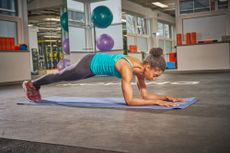 Can you hit these 11 off-the-bike fitness and health benchmarks?
Can you hit these 11 off-the-bike fitness and health benchmarks?Throwing down almost a dozen strength, flexibility and health benchmarks, we dare you pedalling specialists to put some numbers on your all-round athleticism
By Chris Marshall-Bell Published